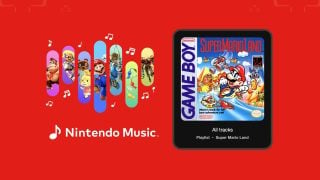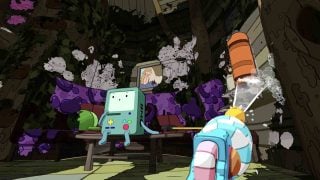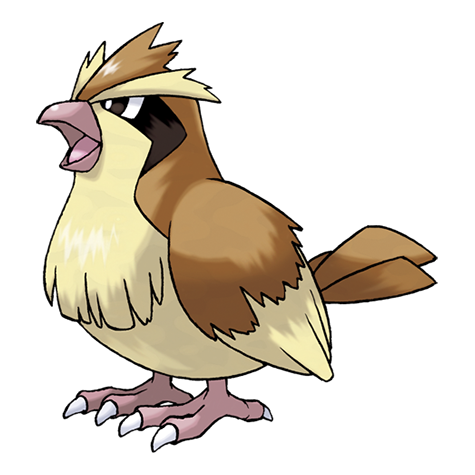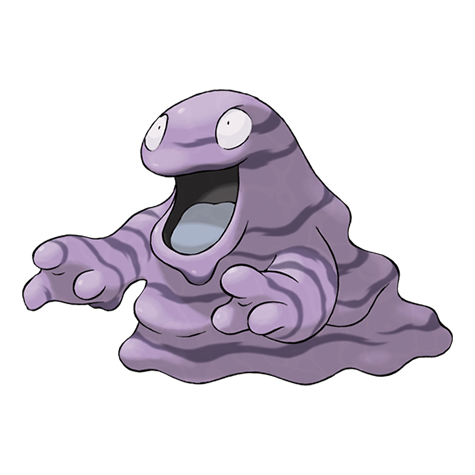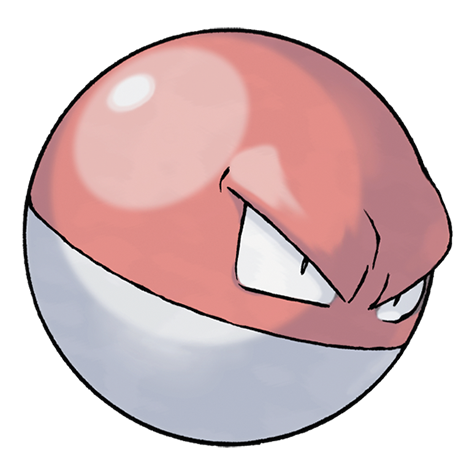We’re just a week away from the long-anticipated releases of Pokémon Sword and Shield for the Nintendo Switch, the series’ first true, HD mainline titles (if you don’t count Pokémon: Let’s Go, which, let’s be honest, you shouldn’t). Pokémon Sword and Shield’s development has been… contentious amongst the fanbase. The news that the games would be the first-ever main titles to not make every single Pokémon obtainable in-game caused (and is causing) quite a stir, especially considering just how many Pokémon are cut from the games.
It’s definitely a bummer and I hope to Arceus that somehow, someway, the rest of the National Pokédex gets patched in. Regardless of the “Dexit” controversy, I know many still remain excited for Sword and Shield, and as a lifelong Pokémon fan myself, I (and the rest of the Nintendo Wire team) wanted to lead up to the games’ launches by looking back at each generation of Pokémon games: their strengths, their weaknesses, what they brought to the series, and even what they took away.
Let’s kick off this seven-day Pokémon celebration with a look back at Generation I: Pokémon Red, Blue, and Yellow Versions. Where it all began.
Hello there! Welcome to the world of Pokémon!

Pallet Town. Morning. Dew on the grass just outside of town, ribbons of sunlight rolling across the sea stretching to Cinnabar Island’s shores. That’s when our very first adventure begins.
Internationally, Generation I consists of three games: Pokémon Red Version, Pokémon Blue Version, and Pokémon Yellow Version. In Japan, though, gamers were treated with a fourth Gen I game: Pokémon Green Version. In Japan, the original paired Pokémon games were Pokémon Red and Pokémon Green. Later on, Pokémon Blue Version was released with some tweaks, fixes, and enhancements over Red and Green. Even later on, Japan got Yellow Version, as well.
I was seven when I first played Pokémon Red Version, probably at the end of 1999 or in early 2000. I’d owned a Game Boy Color (Atomic Purple, thank you very much), but given that my taste in games was absolute garbage at that age, I only had Asteroids and Rampage World Tour for it. My younger twin cousins were actually the ones who introduced me to the series — I can’t be sure, but I think they both owned Pokémon Red. My memories are largely hazy, but I distinctly remember watching one of them train her Charmander. I was enraptured, and pretty soon my entire world was Baader-Meinhof’d. I’d notice Pokémon everywhere. Soon, it was all I heard my second-grade class talking about: the Game Boy games, the Trading Card Game… One friend of mine even told me about his friend who worked for Nintendo that we could submit Pokémon designs to for inclusion in the games! Incredible, right?
What a fricking liar.
I never owned Pokémon Red as a kid, because by the time I’d finally convinced my mom to get me one of the games, Yellow Version was the newest one released. And, by golly, was it so much better than the one I’d seen my cousins play! The towns had color! You got to have a Pikachu you could interact with following you around everywhere! Best of all, you could get Bulbasaur, Charmander, AND Squirtle! All without cheating!
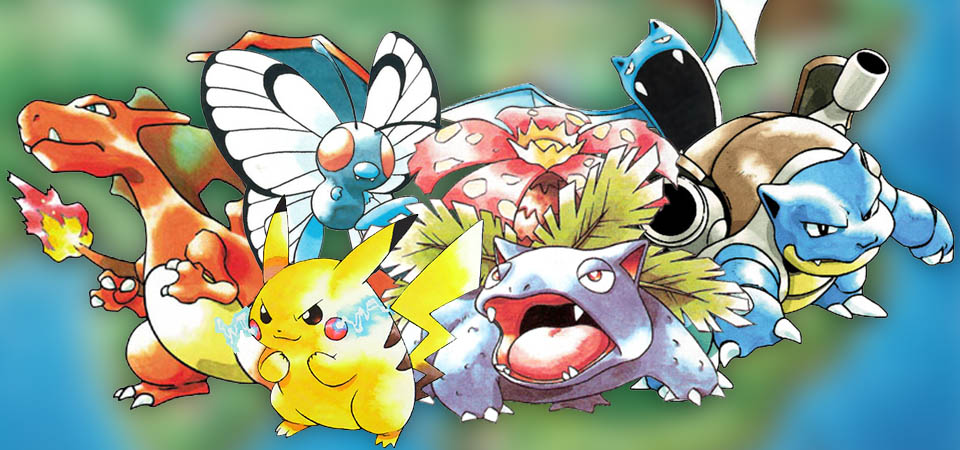
My OG Yellow Version team consisted of Pikachu, Charizard, Venusaur, Blastoise, Golbat, and Butterfree, and considering how completely ridiculous my Pokémon Gold and Crystal teams ended up being, I’m actually quite surprised at how reasonable I was as a seven-year-old Pokémon Trainer.
I think I can attribute Pokémon Yellow Version to my growth as the well-rounded gamer I am today, because it was thanks to Pokémon that I discovered the social facets of video gaming. My younger cousins lived in Los Angeles at the time, so they’d only visit me and my family up in our backwoods, little California town on their school breaks. Because I didn’t have many close friends at that age (certainly none that played Pokémon), they were the only two I could really connect with over it. With our dingy, little Link Cables, we’d battle and trade, and they’d even bring their Nintendo 64 loaded with Pokémon Stadium for us to play with our teams on the big screen (and trust me: seeing your Pokémon in full 3D was a big deal back then).
It’s no wonder I’m still playing Pokémon to this day: It was the first game I owned myself that I found a deep connection to. I’d played Super Smash Bros. at my older cousin’s house, and I’d watched these same younger cousins play The Legend of Zelda: Ocarina of Time, but I’d never been blessed with an N64 of my own. I’m in no way knocking Asteroids or Rampage, but I’d had nowhere near the same amount of fun with them as I did with Yellow. The sense of adventure trekking throughout Kanto was astounding, as were the bonds I developed with my monsters, watching them grow from pathetic, little Level 5s into the hulking, fully-evolved beasts that took down my jerk rival and made him cry. The entire experience was truly incomparable.
Technology is incredible!
All my fawning over Yellow Version aside, going back to Generation I today is kind of a massive slog. I downloaded Pokémon Red Version on the Nintendo 3DS Virtual Console when it released, hoping to recapture the magic I felt as an elementary-school boy. Instead, I just grew frustrated with how slow, grindy, and antiquated it all felt.
Of course, that shouldn’t be surprising to anyone. I mean, these are decades-old games at this point. Still, though, Gen I has a lot of aspects that set it apart from the generations that followed. It’s the shortest generation from a release date perspective — at least outside of Japan. In North America, Pokémon Red Version and Blue Version released in 1998 while Generation II debuted in 2000.
Generation I is also the only generation to not feature the paired games’ box art mascots on the title screen: Instead of Pokémon Red Version showing Charizard, Charmander is instead seen. The same goes with Pokémon Blue and Green Versions, with Squirtle and Bulbasaur, respectively.
It’s also the only generation to not feature a playable female character — a now-standard game feature that launched with the release of Generation II’s Pokémon Crystal Version. Interestingly, datamining Pokémon Red and Green suggests that a female protagonist was planned originally. Why it didn’t come to fruition is anyone’s guess.
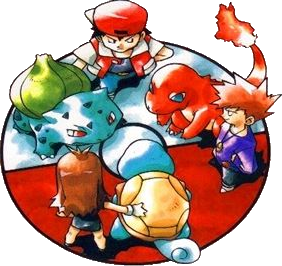
It may surprise some people, but modern Pokémon games are largely the same mechanically as those in Generation I. Generation I introduced the choice between three “Starter Pokémon” with Grass, Fire, and Water as their primary Types. It introduced a Pokémon Professor named after a tree (in this case, Professor Oak) that gives a Starter Pokémon to the player. It introduced a villainous team (Team Rocket) that antagonizes the player, as well as a rival that starts their adventure at the same time as the player.
It introduced the concept of eight Gyms and Gym Leaders, the Elite Four, and the Pokémon Champion. It introduced the limit of six Pokémon per team, as well as the Pokémon Storage System. Lastly, it also introduced 151 Pokémon to the series — although I use the word “introduced” a little loosely here, of course, since no other Pokémon existed before Gen I.
That isn’t to say the Pokémon series hasn’t evolved since Generation I! Back in Gen I (and for a long time afterward), Technical Machines (TMs) were one-use only. There were five stats (HP, Attack, Defense, Speed, and Special — Special Attack and Special Defense were only split out starting in Gen II) and 15 different Types (Dark, Steel, and Fairy weren’t a thing back then). All physical and special moves were determined by move Type rather than the move itself: All Fire-Type moves were special, for instance — even obviously physical moves like Fire Punch.
Gen I was also where the series started introducing “third versions” of paired games — a practice that only ended in Generation IV with Pokémon Platinum Version and was replaced with either direct sequels (in the case of Pokémon Black 2 and White 2) or enhanced paired versions (like Pokémon Ultra Sun and Ultra Moon).
Yellow made a few changes from Red and Blue. Every single Pokémon front sprite was redone to more closely match their official artwork. Some trainer sprites were redone, as well, and the game overall was revamped to reference the Pokémon anime series, which was growing in popularity at the time. Giovanni was given a Persian despite being a Ground-Type Gym Leader, all policemen were reworked as Officer Jennys while Pokémon Center Nurses were changed to Nurse Joys (complete with partner Chanseys). Minor characters from the anime were added in as trainers while larger characters, like Team Rocket’s Jessie, James, and Meowth, were given notable roles throughout the game. Then, of course, there were the most obvious changes: a partner Pikachu that follows the player (and can participate in a surfing minigame!), plus the addition of multiple color palettes when played on the Game Boy Color (at least in the West).
Wow! You chased off Team Rocket all by yourself?
Generation I’s story was largely the same throughout its games: The player, default name “Red,” starts his journey in Pallet Town. He’s given a Starter Pokémon (either Bulbasaur, Charmander, Squirtle, or Pikachu) by neighbor Professor Oak and sets out to crush the Pokémon League by beating eight Pokémon Gyms and the Elite Four and Champion. Along the way, the player is tormented by Oak’s grandson whose name he’s forgotten, as well as Team Rocket: a global criminal organization dedicated to using Pokémon for profit and conquering the planet.
The player goes from town to town, wandering through forests, caves, and vast oceans while defeating fellow trainers, Gym Leaders, and Team Rocket Grunts along their adventure through the Kanto region. After vanquishing Team Rocket’s leader, Gym Leader Giovanni, the player beats the Elite Four and their rival, taking their newly-crowned title of Champion.
As far as stories go, Generation I had the most straightforward one by far — and honestly one of the best. Now, nothing can come close to the genius of Generation V’s overall plot, but I really appreciate how simple Gen I kept things: Just a young boy with a goal of being the very best, forced into taking down an international Pokémon-smuggling ring.
As far as settings go, though, Kanto is pretty uninteresting: just small suburban towns and a handful of metropolises without any real distinct character. The spooky Lavender Town, home to the haunted Pokémon Tower, is probably the most interesting locale in Kanto, with a chilling musical theme and some poignant story bits.
This may be a controversial opinion, but Gen I’s Pokémon designs are probably my least favorite in the series. There are some ‘mons I’m fond of in Gen I, like the Charizard, Gengar, Poliwrath, and Dragonite lines (not to mention Eevee and its evolutions), but overall, they’re all very… meh to me. There’s definitely a smaller selection of imaginative designs here when compared to later generations. Exhibits A through D:
Alolan Forms and the cross-gen evolutions introduced in Gen IV made a lot of Gen I Pokémon more appealing to me (like Marowak, Muk, Magmar, Magneton, Electabuzz, Rhydon, and Tangela), but still, most of my favorite Pokémon come from other generations. Which is why Game Freak’s Gen I pandering since Pokémon X and Y has become a little… annoying, to say the least.
I like shorts! They’re comfy and easy to wear!
Despite how rough playing Pokémon’s first generation is today, and how many of Gen I’s designs fall short after being spoiled with more whimsical and inventive ones in later games, I have great fondness for Pokémon Red, Blue, and Yellow. Generation I was, after all, the generation that made me fall in love with Pokémon — and probably gaming in general.
So even though I want to drive bamboo shards under my fingernails every time I play Pokémon Red on my Nintendo 3DS for more than ten minutes, it’s hard to forget the wonder the first three Pokémon games brought to my childhood. You caught me in your personal Master Ball, Game Freak. And like a well-planted Leech Seed, my obsession was only just beginning to grow…
What’re your thoughts on Pokémon Generation I? Let us know in the comments and be sure to catch us tomorrow for our retrospective on Generation II!
Leave a Comment
